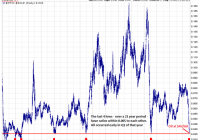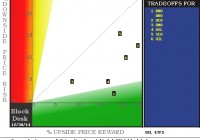Oil ETFs Gain On Lower U.S. Output Outlook
Fund holdings, ETF investing “}); $$(‘#article_top_info .info_content div’)[0].insert({bottom: $(‘mover’)}); } $(‘article_top_info’).addClassName(test_version); } SeekingAlpha.Initializer.onDOMLoad(function(){ setEvents();}); When it comes to economic growth, oil has been playing foul over the past one year. After terrible trading in the second half of 2014 and early 2015, oil has brought some respite and has been stuck in a tight range of $57-62 per barrel in recent weeks. While the drop in the U.S. oil rig count for the 26th straight week and billions of dollars in spending cuts are pushing the prices higher, the global oil glut has been the major headwind. However, this concern seems to be fading given the U.S. Energy Information Administration (EIA) report, which showed that the U.S. shale boom, the major source of global supply glut, is shrinking. The EIA expects oil production from the seven shale regions – Bakken, Eagle Ford, Haynesville, Marcellus, Niobrara, Permian and Utica – to fall by 1.3% to 5.58 million barrels a day in June and further by 1.6% to 5.49 million barrels a day in July. Additionally, total U.S. output will likely decline in the second half of the year through early 2016, as per the monthly report from the agency. Now, the agency sees U.S. oil production as averaging 9.4 million barrels per day for this year and 9.3 million barrels per day for the next, compared with 8.71 million barrels per day last year. On the other hand, the EIA also raised the global oil demand outlook to 93.3 million barrels per day for this year from 93.28 million barrels per day projected last month. Demand for 2016 is expected to see a jump to 94.64 million barrels per day. Given the new positive reports on demand/supply trends, both crude and Brent climbed over 3% on Tuesday, leading to impressive gains in the oil ETF world as well. The iPath S&P GSCI Crude Oil Total Return Index ETN (NYSEARCA: OIL ) was the biggest gainer on the day, rising about 3%, followed by gains of 2.75% for the United States Brent Oil ETF (NYSEARCA: BNO ), 2.54% for the United States Oil ETF (NYSEARCA: USO ) and 2% for the PowerShares DB Oil ETF (NYSEARCA: DBO ). These ETFs give investors direct access to dealings in the futures market (see: all the energy ETFs here ). The data from the American Petroleum Institute also led to the rally in oil prices and ETFs. As per the data, U.S. crude inventories fell by 6.7 million barrels in the week ended June 5 – the first weekly decline in three weeks. In today’s morning trading session, oil prices are also up more than 2% ahead of the inventory data, which suggests smooth trading by the ETFs in the coming days. The government data is expected to show that U.S. crude inventories fell at a faster pace by 1.7 billion barrels last week. Original Post Share this article with a colleague


